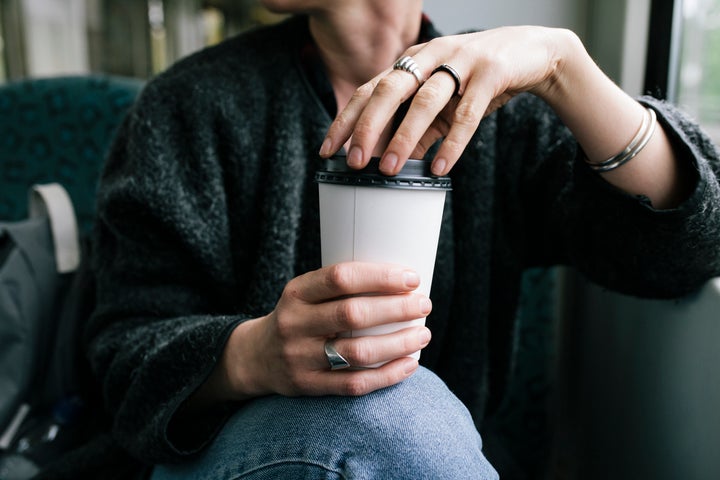
A year ago single-use plastics were little more than a fringe issue for politicians and businesses - and not much of a concern for the rest of us.
Wind the clock forward to today, and the popular backlash is in full flow. Plastic has replaced sugar as public enemy number one.
But as so often is the case, awareness of a problem is not translating into action. In fact, it’s not really changed the way most of us are behaving at all.
The lag between rhetoric and action is not unusual. Behaviour change on this scale is hard. Single-use plastics are embedded in our daily lives.
To create change of this kind, we all need to do our bit. But politicians and businesses have a responsibility to lead the way. Left to their own devices, most people will otherwise just carry on as normal.
There are two hard interventions organisations and policy makers can consider to cut the consumption of single-use plastics: a ban or a charge. Both are being mooted in different ways - and both could drive brilliant results.
But it’s not as simple as a one-size-fits-all policy. What works for a plastic bag or a straw won’t necessarily work for a bottle or a cup. And the political and economic context is complex. To get it right will take time.
That is reflected in progress to date. The ground-breaking UK Plastics Pact, the government’s environmental plan and the various other political and industry commitments being made are promising - but they often come with a target date years or even decades into the future.
Put simply, we can’t yet rely on levies and bans. Something else is needed to get things moving.
Nudge Theory - and the growing field of behavioural economics - could well provide the answer.
The theory is built on the premise that we frequently make unconscious decisions that are not in our best interests - or indeed the interests of wider society and the environment.
By introducing changes to the environment - or ‘nudges’ - you encourage people to stop and think about what would otherwise be an unconscious behaviour. It’s about persuading people to make certain decisions - without removing their freedom of choice.
Daniel Kahneman’s Thinking, Fast and Slow helps explain the point. Kahneman finds that we have one thought process that responds automatically and instinctively, and another that is more considered. The former may sometimes lead to bad choices but it is quicker, easier and more practical than deliberating on every single decision. Nudge Theory is simply about moving people from fast to slow thinking.
Nudge Theory is serious business. Its so-called father Richard Thaler has been awarded The Nobel prize in economics. The government has set-up its own Nudge Unit. And there are examples of the theory in action all around us that show how it can be put into practice.
You can introduce something new to re-focus people’s minds. The flies etched on the urinals at Schiphol Airport is a popular example - giving target-loving men something to aim at and reducing spillage by 80%.
You can use messaging and product placement to make people think again. Think of calorie counting on menus, or putting healthier snacks at eye-level at supermarket checkouts.
Or you can change the default option. Countries where people are automatically enrolled as organ donors have a much bigger pool of donors. In these opt-out countries, an average of 90% of people donate their organs.
What works for urinals, sweets and organs can work for single-use plastics too.
Take single-use coffee cups. As it stands, disposable is normal. While most people would now agree they’re not great for the environment, choosing a disposable cup is a fast and unconscious decision. On top of that, it’s convenient and everyone else does it.
There are several nudges that could help curb consumption of the disposable cup.
- Encourage people to drink in. Put up a sign to tell people they won’t be charged extra to sit in, and encourage them to take 10 minutes out of their day to pause and enjoy their drink, rather than drink it mindlessly on the move.
- Provide great looking reusable alternatives. Make people want the alternative - not just think they ought to choose it.
- Put reusable alternatives at eye level. Make people think about them while they queue, and hide away the stacks of disposable cups in a drawer.
- Change perceptions of what is normal. Ask what cup customers will be using. ‘Do you need a disposable plastic cup?’ ‘What cup will you use today?’ Make people conscious of the decision they are making.
- Remind people of the consequences. Put up posters reminding people of the scale and impact of plastic pollution.
- Remove logos on single-use cups. Disposable cups from great brands are symbols of status. Remove the design benefits to the consumer and the disposable cup loses some appeal.
- Put negative messaging on disposable cups. Put simple messages on cups to make people think twice about using one. ‘I am made of plastic.’ ‘Useful for 10 minutes, around for decades.’ Or use colours or imagery to make the same point.
And that’s just coffee cups. Every different product could have its own set of nudges. The opportunities are vast.
Done properly, Nudge Theory could effectively outlaw single-use plastics. Imagine if your plastic habit invited the same social scrutiny as smoking. It might not be too far away.